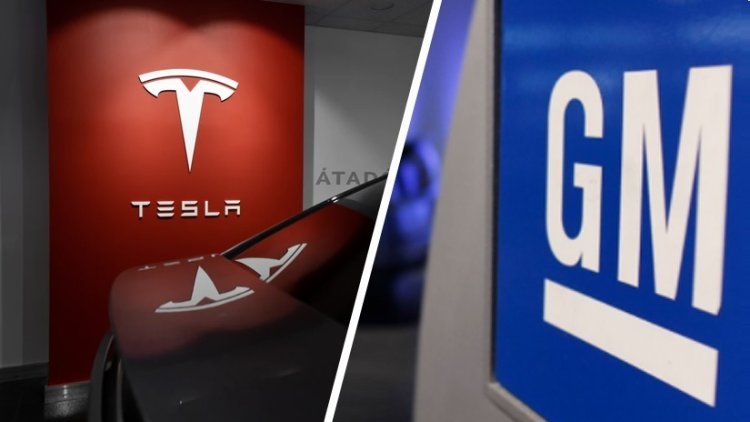Are Car Insurers Ready to Meet the Tech Challenge?
The automotive industry is undergoing a seismic shift, driven by advancements in technology that are redefining how vehicles operate, interact, and even insure themselves. From connected cars and telematics to autonomous driving and AI-powered analytics, the landscape of auto insurance is evolving at an unprecedented pace. But are traditional car insurers ready to keep up with this technological revolution?

The Growing Influence of Vehicle Technology
Modern vehicles are no longer just mechanical machines; they are sophisticated data hubs equipped with sensors, cameras, and AI-driven systems that collect real-time driving data. Technologies such as Advanced Driver Assistance Systems (ADAS), vehicle-to-vehicle (V2V) communication, and over-the-air software updates are enhancing road safety and vehicle efficiency. Automakers like Tesla, General Motors, and Ford are integrating built-in telematics, allowing for precise driver behavior tracking.
This shift raises critical questions for traditional insurers:
- How will they leverage real-time vehicle data for risk assessment?
- Can they compete with automakers that are entering the insurance market?
- Are their legacy pricing models adaptable to usage-based insurance (UBI) policies?
Challenges for Traditional Insurers
While automakers are embedding insurance solutions into their ecosystems, traditional car insurers face several hurdles in adapting to this new reality.
1. Outdated Pricing Models
Historically, tesla offering insurance premiums have been determined using generalized risk factors such as age, location, and driving history. However, technology now enables real-time risk assessment through telematics, which directly monitors driving behavior. Traditional insurers that fail to incorporate this granular data may struggle to offer competitive pricing compared to automakers leveraging built-in vehicle technology.
2. Limited Access to Real-Time Data
Unlike automakers, insurance companies often rely on external telematics devices or mobile apps to gather driving data. This puts them at a disadvantage compared to companies like Tesla, which has direct access to in-car data and can adjust insurance premiums accordingly. Without seamless data integration, insurers risk lagging behind in offering personalized policies.
3. The Rise of OEM-Backed Insurance
Automakers are recognizing the value of offering in-house insurance, with companies like Tesla, GM, and Ford rolling out insurance services tailored specifically to their vehicles. These manufacturer-backed insurance policies come with benefits such as lower premiums for safe driving and real-time claims processing. Traditional insurers must find ways to compete or risk losing a significant share of the market.
4. Cybersecurity and Data Privacy Concerns
With the increasing use of telematics and AI-driven data collection, cybersecurity and privacy concerns become a pressing issue. Insurers must not only comply with evolving regulations but also ensure that their data handling practices are transparent and secure. Consumers are growing increasingly concerned about how their driving data is used and shared, and insurers that fail to address these concerns may struggle with customer trust.
How Can Insurers Adapt?
To stay competitive in this rapidly evolving market, car insurers need to embrace innovation and rethink their traditional models.
1. Invest in Telematics and AI
Insurance companies must integrate telematics and AI-driven analytics into their pricing models. By leveraging real-time data, they can offer more personalized policies, rewarding safe driving behavior while accurately assessing risk.
2. Partner with Automakers and Tech Firms
Instead of competing directly with automakers, insurers can explore partnerships that allow them access to vehicle data and advanced driving analytics. Collaborations with car manufacturers, software developers, and AI firms can help insurers modernize their risk assessment strategies.
3. Develop Usage-Based Insurance (UBI) Policies
Consumers are increasingly seeking fairer pricing models that reflect their actual driving habits. Insurers that offer UBI policies, where premiums are determined based on real-time driving behavior rather than historical data, will have a competitive edge.
4. Strengthen Cybersecurity and Data Transparency
With data privacy concerns on the rise, insurers must prioritize cybersecurity and ensure clear communication with customers regarding how their driving data is collected, used, and protected. Trust will be a key factor in the adoption of tech-driven insurance solutions.
The Future of Auto Insurance
The auto insurance industry is at a crossroads. While emerging technologies present challenges, they also offer immense opportunities for insurers willing to embrace change. The future will belong to companies that can leverage real-time data, offer personalized pricing, and build trust through transparency and security.
What's Your Reaction?












